INDIAN ARMED FORCES CHIEFS ON OUR RELENTLESS AND FOCUSED PUBLISHING EFFORTS
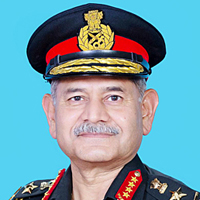
The insightful articles, inspiring narrations and analytical perspectives presented by the Editorial Team, establish an alluring connect with the reader. My compliments and best wishes to SP Guide Publications.
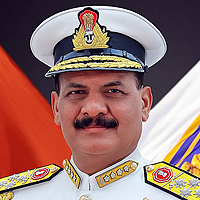
"Over the past 60 years, the growth of SP Guide Publications has mirrored the rising stature of Indian Navy. Its well-researched and informative magazines on Defence and Aerospace sector have served to shape an educated opinion of our military personnel, policy makers and the public alike. I wish SP's Publication team continued success, fair winds and following seas in all future endeavour!"

Since, its inception in 1964, SP Guide Publications has consistently demonstrated commitment to high-quality journalism in the aerospace and defence sectors, earning a well-deserved reputation as Asia's largest media house in this domain. I wish SP Guide Publications continued success in its pursuit of excellence.
- A leap in Indian aviation: Prime Minister Modi inaugurates Safran's Global MRO Hub in Hyderabad, Calls It a Milestone
- All about HAMMER Smart Precision Guided Weapon in India — “BEL-Safran Collaboration”
- India, Germany deepen defence ties as High Defence Committee charts ambitious plan
- True strategic autonomy will come only when our code is as indigenous as our hardware: Rajnath Singh
- EXCLUSIVE: Manish Kumar Jha speaks with Air Marshal Ashutosh Dixit, Chief of Integrated Defence Staff (CISC) at Headquarters, Integrated Defence Staff (IDS)
- Experts Speak: G20 Summit: A Sign of Global Fracture
Joint Military Space Doctrine
The Joint Military Space Doctrine released on September 16, signifies a strategic shift to recognise space as a critical domain alongside land, air, and cyber
 |
The Author is Former Director General of Information Systems and A Special Forces Veteran, Indian Army |
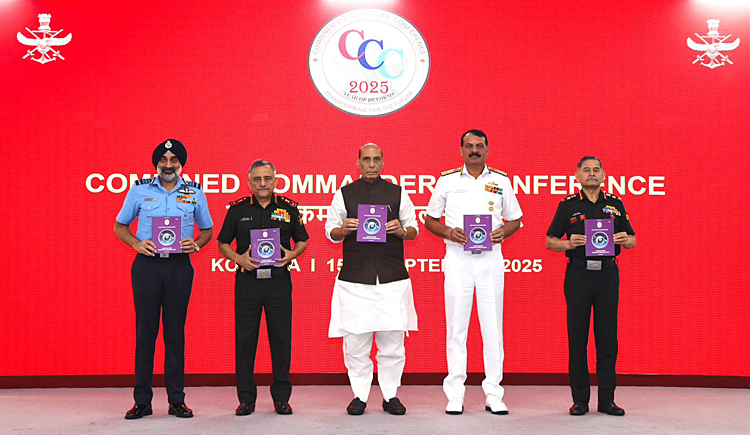
The three-day Combined Commanders' Conference (CCC), which concluded on September 16, 2025, chalked out a roadmap to transform the Indian Armed Forces into a more integrated, technologically advanced and operationally agile force, fully capable of addressing multi-domain threats, safeguarding national interests and contributing to nation building. A new Joint Military Space Doctrine was issued, which CCC officials described as a key milestone in institutionalising this domain as part of the national security strategy.
The Combined Commanders' Conference (CCC) officials described the new Joint Military Space Doctrine as a key milestone in institutionalising this domain as part of the national security strategy.
The Joint Military Space Doctrine released on September 16, signifies a strategic shift to recognise space as a critical domain alongside land, air, and cyber. This doctrine focuses on space-centric warfare, protecting space assets, and mitigating risks, aligning with the creation of the Defence Space Agency (DSA) in 2024 to address space-related security challenges. The doctrine's goal is to ensure a synergised, integrated approach to operations in space, moving beyond service-specific strategies to a unified command structure.
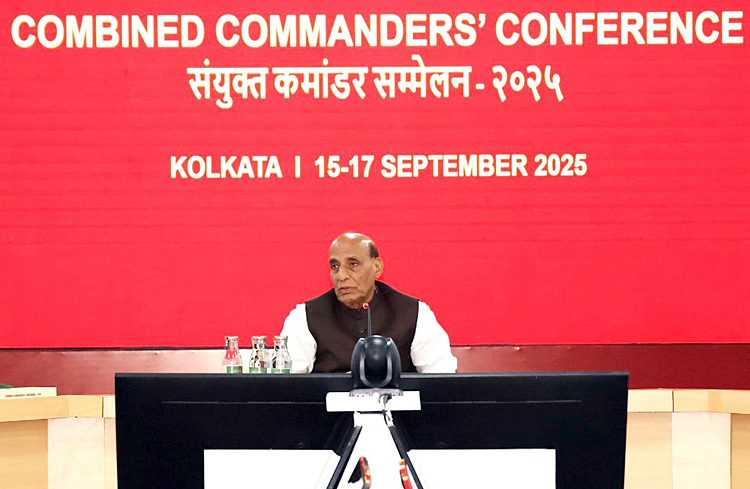
Key aspects of the Joint Military Space Doctrine included the following:
- Recognition of Space as a Warfighting Domain. The doctrine officially acknowledges space as a critical domain for warfare, similar to land, sea, air, and cyberspace.
- Focus on Space-Centric Warfare. It outlines how military forces will operate and conduct warfare in and through the space domain.
- Asset Protection and Risk Mitigation. A core objective is to protect India's valuable space assets and to develop strategies for mitigating risks in the space environment.
- Jointness and Integration. The doctrine promotes a "joint" approach, fostering cross-domain synergy and the integration of processes across all military domains, with a focus on integrating resources under a single commander.
- Establishment of the Defence Space Agency (DSA). The creation of the DSA in 2024 serves as a key institutional framework to implement the doctrine's objectives.
The significance of the Joint Military Space Doctrine can be gauged from the fact that:
- This is a strategic move by India to develop a comprehensive military approach to space, rather than focusing on individual service capabilities;
- The doctrine aims to enhance India's readiness and create a more integrated and effective operational capability by leveraging all available resources across domains, and;
- It positions India to prepare for future conflicts, particularly in the emerging domain of space, and to defend its growing interests in space.
The doctrine's goal is to ensure a synergised, integrated approach to operations in space, moving beyond service-specific strategies to a unified command structure.
Developed by the Doctrine Directorate of the Integrated Defence Staff and the Armed Forces, the Joint Military Space Doctrine builds on existing infrastructure like the Defence Space Agency and India's demonstrated anti-satellite capabilities, defining the country's operational roles, capabilities, and deterrence framework in space, recognising it as a formal military domain. The Defence Space Agency (DSA) is a tri-service agency headquartered in Bengaluru, Karnataka, tasked with operating the space warfare and satellite intelligence assets of India. It draws personnel from all three branches of the Indian Armed Forces. The Defence Space Research Agency (DSRA) is the scientific organisation responsible for developing space-warfare systems and technologies for the Defence Space Agency. The DSRA is composed of scientists who undertake research and development in close coordination with the IDS.
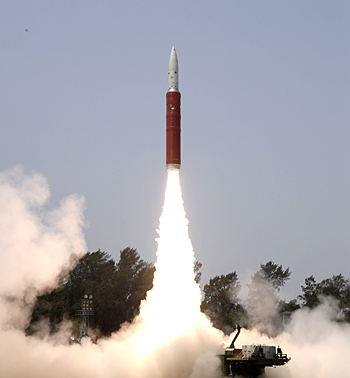
In 2023, the Indian Air Force (IAF) proposed transitioning as the Indian Air and Space Force (IASF) with an enhanced focus on space-based capabilities India including plans to operate over 100 small and large military satellites within next seven-eight years by expanding the role of DSA to a full-fledged Space Command.
In December 2024, with the aim of transitioning IAF to IASC, the Department of Military Affairs (DMA) presented a plan to the key stakeholders, like the Ministry of Defence (MoD). ISRO and DRDO. The plan envisages strengthening DSA and other related organisations by increasing the manpower, ground-based infrastructure, space-based assets to enhance India's space-centric warfare, space asset protection and risk mitigation capabilities. Earlier, the Government of India had already approved DSA's SBS-III project which entails launching 52 military surveillance and communication satellites for the Indian Military between 2025 and 2029.
The Defence Space Agency (DSA) is a tri-service agency headquartered in Bengaluru, Karnataka, tasked with operating the space warfare and satellite intelligence assets of India.
The CCC has also decided to set up three new joint military stations on the mainland, where all three Services will share a common establishment. In addition, the education branches of the three Services are to be merged into a single 'Tri-Services Education Corps'. This implies a unified cadre for training institutions, including the National Defence Academy, Indian Military Academy, Indian Naval Academy and the IAF Academy.
At the international space conference called the AMOS (Advanced Maui Optical and Space Surveillance Technologies) Conference 2025 held from September 16-19, 2025, at Hawaii, USA, India was represented by Lt Col Aman Singh of the Indian Army. The conference was focused on space situational awareness (SSA) and space domain awareness (SDA).
In 2023, the Indian Air Force (IAF) proposed transitioning as the Indian Air and Space Force (IASF) with an enhanced focus on space-based capabilities
Interestingly, America's Donald Trump Administration has recently ordered that NASA will henceforth operate as a national intelligence and security agency– not just as a space agency, as revealed by NASA Watch founder Keith Cowing; NASA will now have a different set of primary functions, which includes "intelligence, counterintelligence, investigative, or national security work."
It is being said that the new Joint Military Space Doctrine is a key milestone in institutionalising this domain as part of the national security strategy, but we still don't have a national security strategy. In 2018, an apex level Defence Planning Committee (DPC) chaired by NSA Ajit Doval was set up to formulate the NSS and a National Defence Strategy (NDS) but there has been no update on the progress. In the past, former Army Chief General M.M. Naravane had said it was essential to have an NSS, NDS and a higher defence organisation in place and only then can we think of integrated theatre commands. As to the establishment of integrated theatre commands, can we even attempt this with the IAF down to 29 operational fighter squadrons against the authorised 42 squadrons and in an environment of multi-faceted, multi-domain threats?





